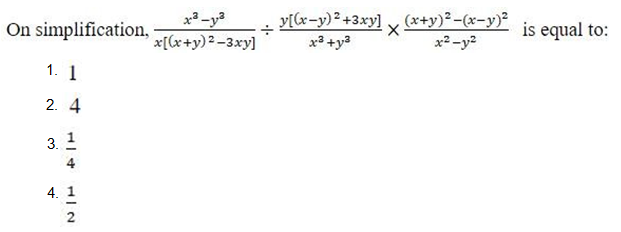Question
The speed of a bike increases by 5 km/hr after every 1
hour. If the distance travelled by the bike in 1st hour is 20 km, the find the total distance travelled by the bike in 14 hours.Solution
Since, the speed of the bike increases by 5 km/hr after every 1 hour, therefore the bike will travel 5 km extra after every 1 hour. Therefore, distance travelled by the bike in 1st hour = 20 km Distance travelled by the bike in 2nd hour = 20 + 5 = 25 km Distance travelled by the bike in 3rd hour = 25 + 5 = 30 km This form an AP i.e. 20, 25, 30………distance travelled in 14th hour Therefore, total distance travelled by the bike in 14 hours = sum of the AP Distance travelled in 14 hours = (n/2){2a + (n – 1)d} Where n = number of terms = 14, a = 1st term = 20 and d = common difference = 14 Therefore, distance travelled in 14 hours = (14/2){2 × 20 + (14 – 1) × 5} = (14/2)(40 + 65) = 735 km
If p = 24 - q - r and pq + r(q + p) = 132, then find the value of (p² + q² + r²).
((99.9 - 20.9)² + (99.9 + 20.9)² )/(99.9 x 99.9 + 20.9 x 20.9) = ?
...
Find the value of the given expression-
(4x+4 -5× 4x+2) / 15×4x – 22×4x
If 4x² + y² = 40 and x y = 6, then find the value
of 2x + y?
If p = 40 - q - r and pq + r(q + p) = 432, then find the value of (p² + q² + r²).
47.98 × 4.16 + √325 × 12.91 + ? = 79.93 × 5.91
If x + y = 4 and (1/x) + (1/y) = 24/7, then the value of (x3 + y3).
- If p = 20 - q - r and pq + r(p + q) = 154, then find the value of (p² + q² + r²).
If a = (√2 - 1)1/3, then the value of (a-1/a)3 +3(a-1/a) is:
Relevant for Exams:


